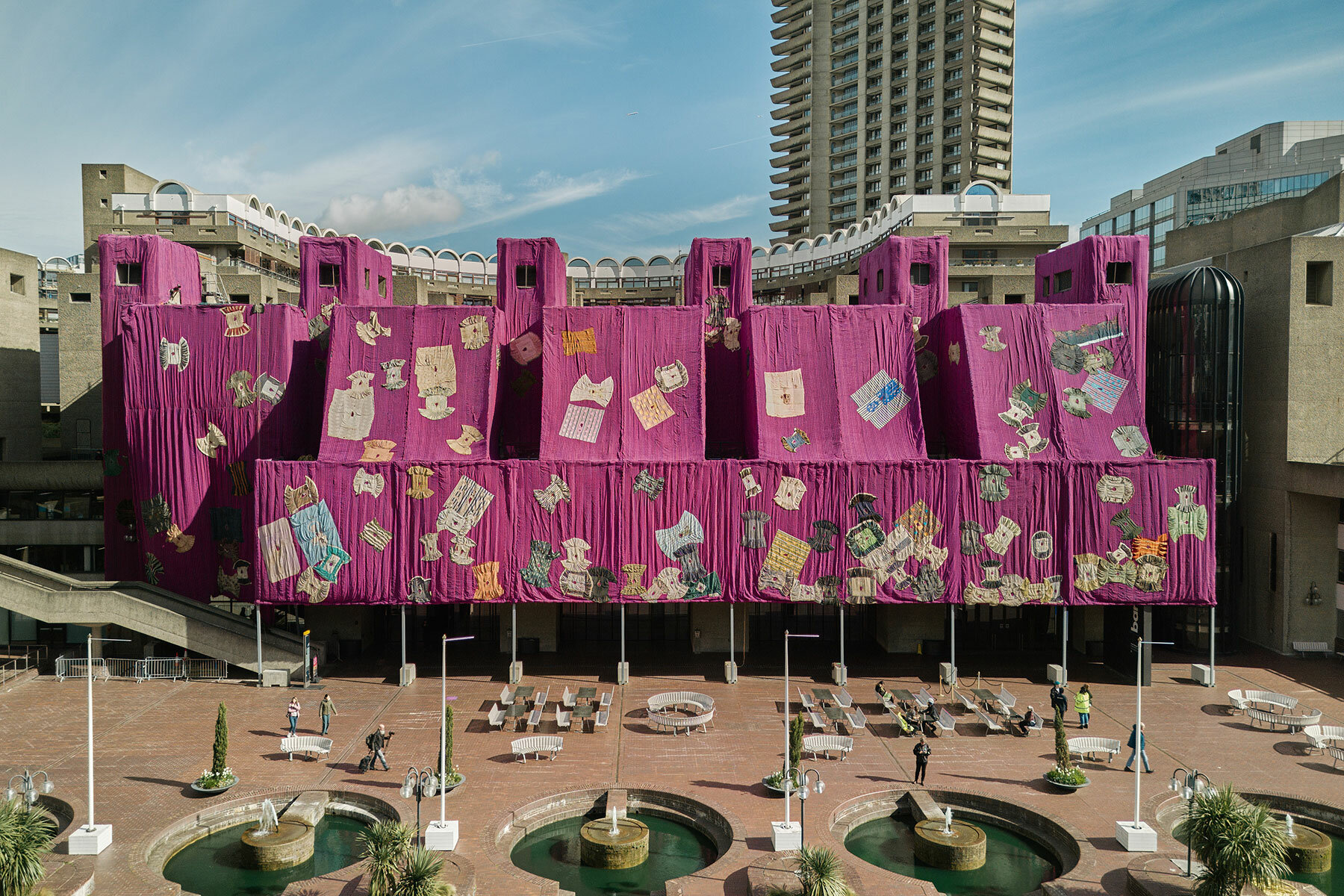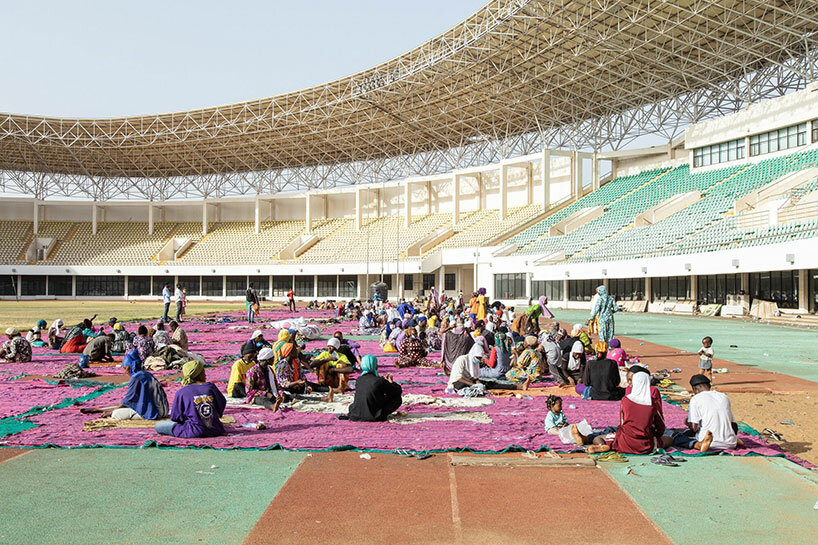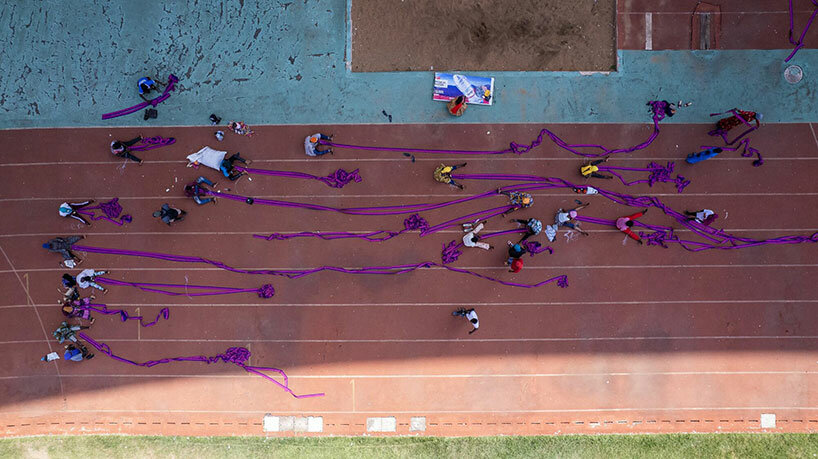Ibrahim Mahama‘s new installation, Purple Hibiscus transforms the Lakeside Terrace of the Barbican Centre in London. The work wraps the building’s iconic concrete walls with around 2000 square meters of bespoke pink and purple fabric hand-woven by hundreds of Ghanaian artisans. The commission is part of an ongoing exhibition titled Unravel: The Power & Politics of Textiles in Art, which highlights artists who have explored the transformative and subversive potential of textiles from the 1960s to date.

Named after Chimamanda Ngozi Adichie’s eponymous 2003 novel, Purple Hibiscus was created in collaboration with hundreds of craftspeople from Tamale, Ghana. The work involves the meticulous hand weaving and sewing of vast swathes of pink and purple fabric, tailored to fit the brutalist architecture of the Barbican’s Lakeside facade. Spanning approximately 2 kilometers in length and weighing a total of 20 tons, this monumental work of art is an extraordinary feat of craftsmanship. Embroidered on the fabric are around 100 ‘batakaris’, traditional robes worn by both northern Ghanaian royals and common people. Ibrahim Mahama acquired these garments through barter and trade from various communities in northern Ghana. These revered textiles, often treasured by families for generations, are a testament to the rich history, lineage and authority of the people who once wore them. Despite the wear and tear of years of use, these garments symbolize the enduring legacy of traditional belief systems and the continued importance of intergenerational wisdom.

Purple Hibiscus consists of vast textile pieces meticulously hand-sewn from strips of woven fabric to fit the exterior of the Barbican building precisely. The pieces are so large that, on days when matches weren’t taking place, the artist rented out the Tamale football stadium so the work could be spread out on the floor as it was sewn by hundreds of women from local sewing collectives. Ibrahim Mahama, known for celebrating human labor, collaborated closely with Tamale weavers and sewing collectives for this project.
A lot of work and considerable engineering experience went into the hanging of such an enormous work as a few things had to be kept in mind such the installation withstanding wind and keeping noise to a minimum. Buro Happold, the engineers who are working on the Barbican renewal project, are behind the installation of Purple Hibiscus. The enormous fabrics were made to a cutting pattern and hung using a system of straps, ratchets and weights. They have been fitted closely to the building in order to avoid issues around noise and wind.



